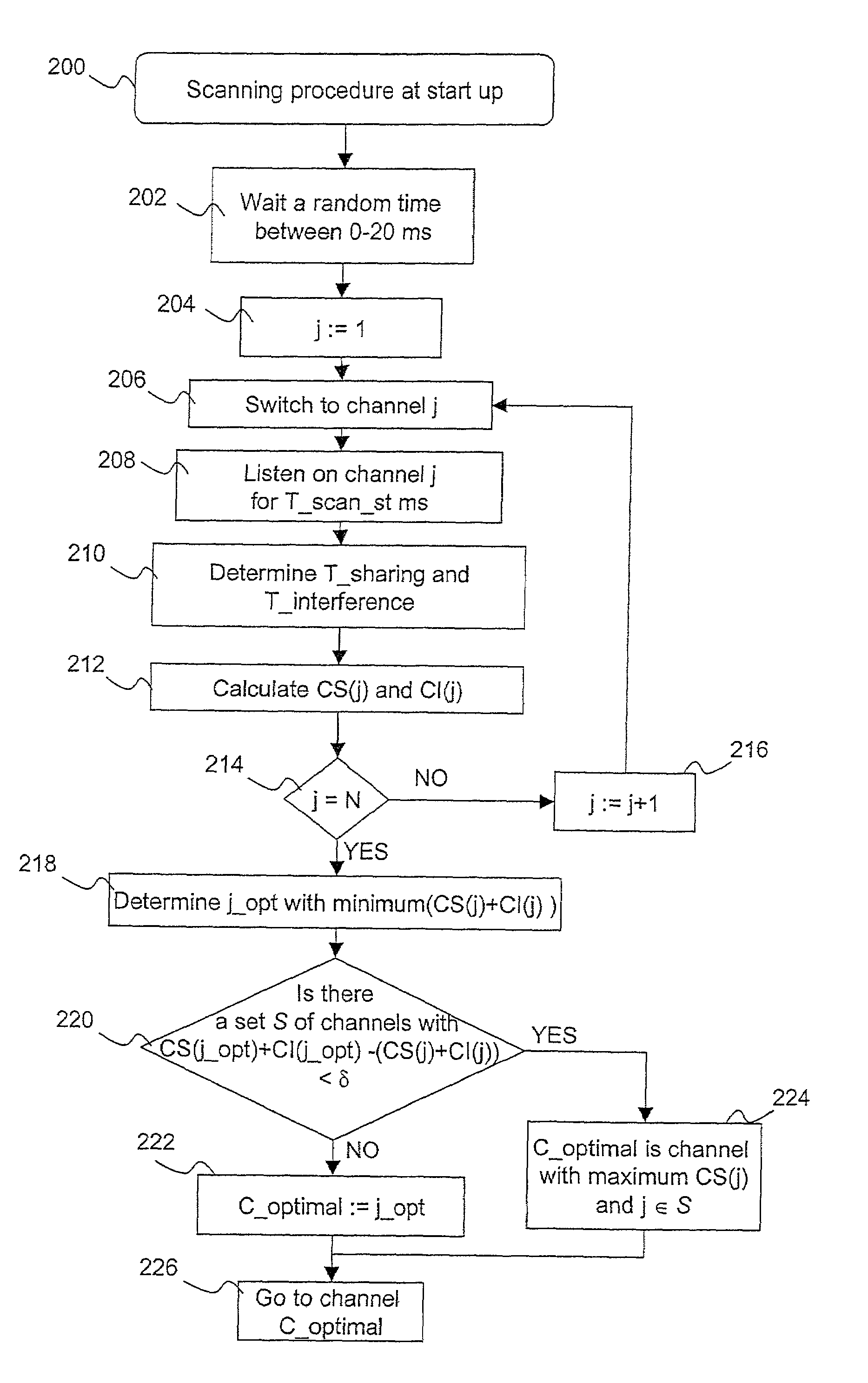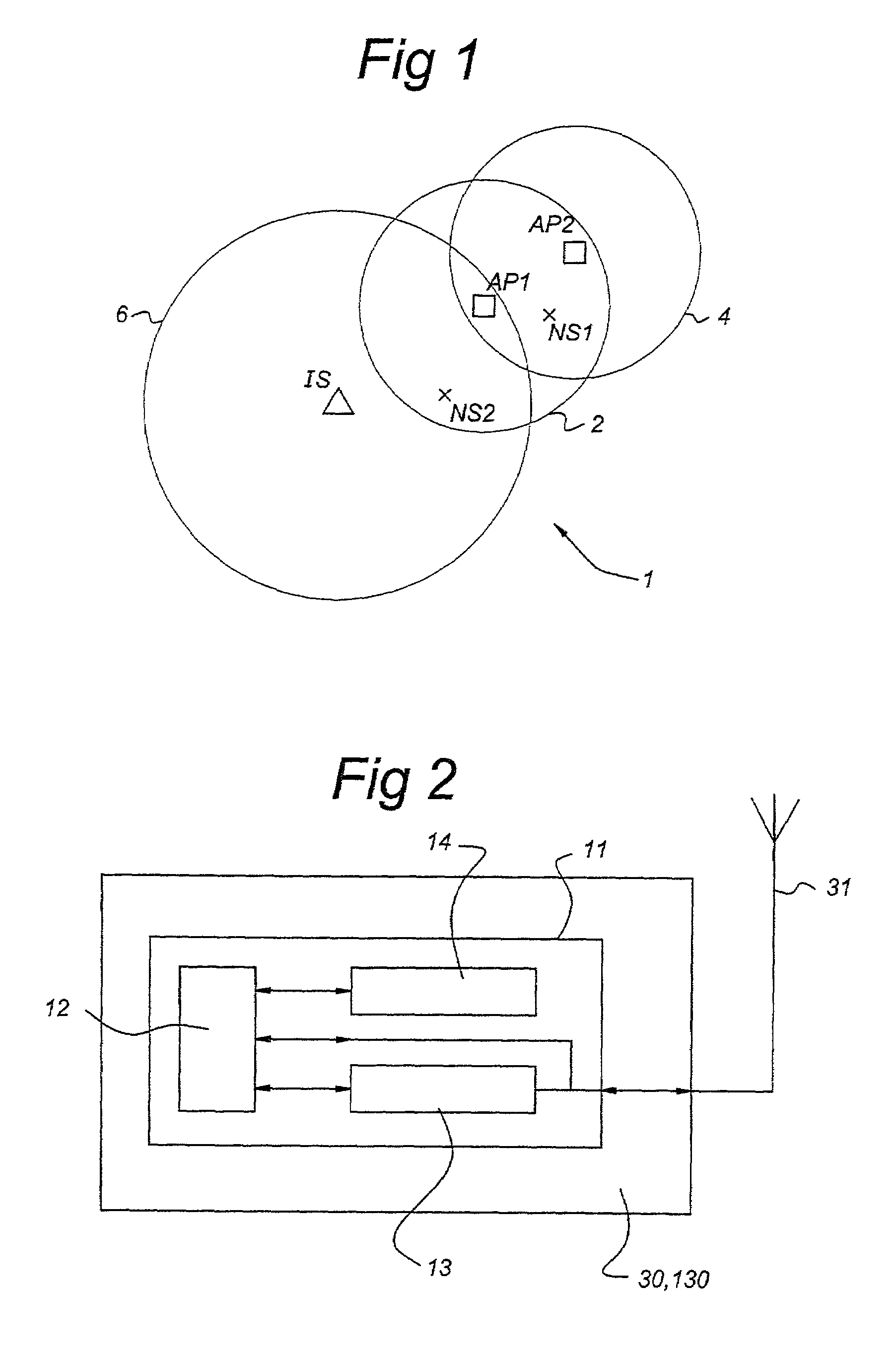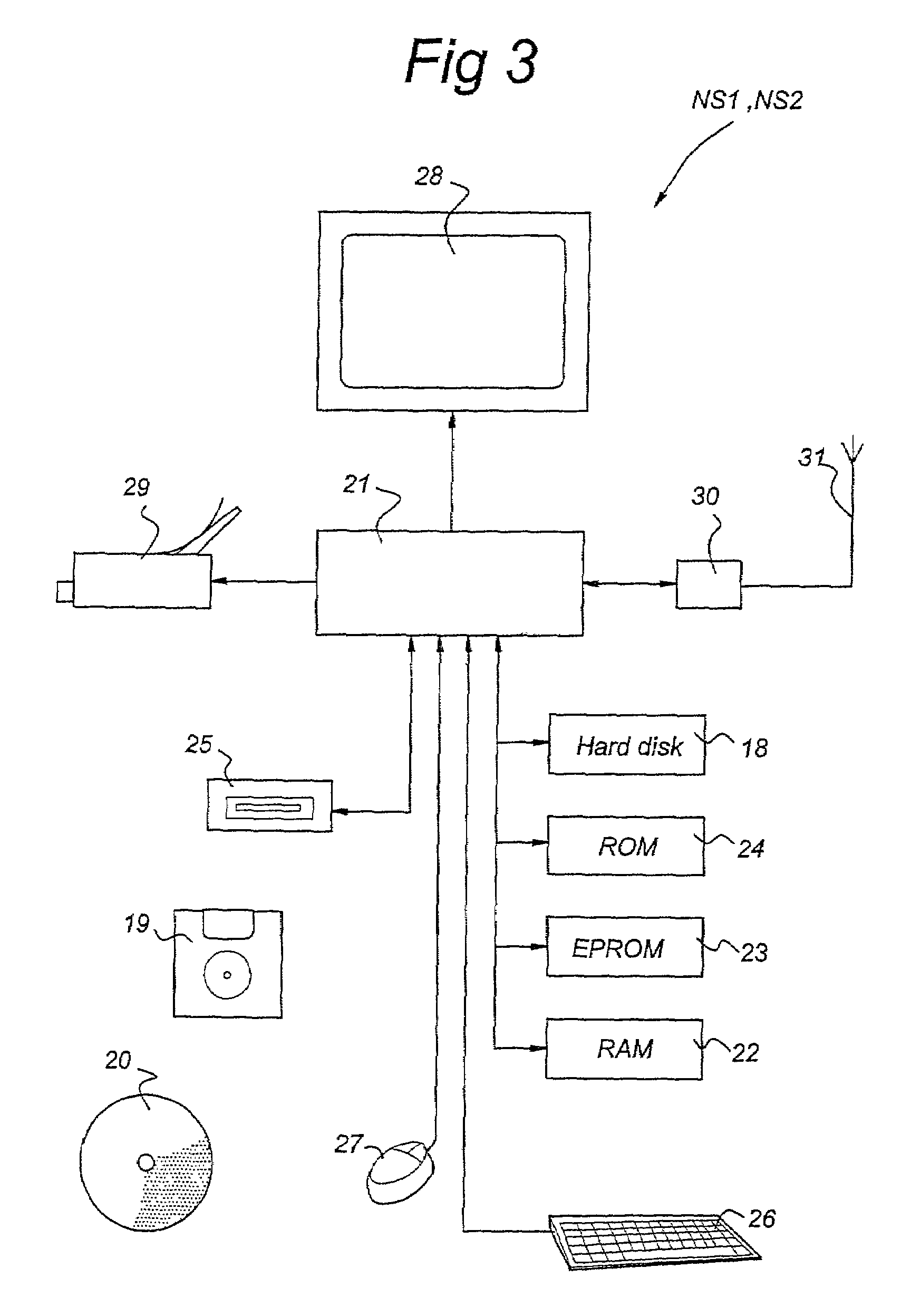Wireless LAN with dynamic channel selection
a dynamic channel and wireless lan technology, applied in the field of communication systems, can solve the problems of unlicensed spectrum, time-consuming and laborious, and waiting for probe requests can take up to 50 ms
- Summary
- Abstract
- Description
- Claims
- Application Information
AI Technical Summary
Benefits of technology
Problems solved by technology
Method used
Image
Examples
Embodiment Construction
[0049]In FIG. 1, a wireless LAN 1 and two of its access points AP1, AP2 with cells 2, 4 are shown. Also two network stations NS1, NS2 are shown. Access point AP1 is serving cell 2 and access point AP2 has its own cell 4. The boundaries of cell 2 are defined by the carrier detect threshold (CT) used by the network stations NS1, NS2 and the access point AP1. Outside the cell 2, the receive level of signals coming from AP1 will be lower than the CT, so network stations located outside cell 2 will not be able to communicate (be associated) with AP1. The area outside cell 2 is covered by other APs within the same wireless LAN or is not part of the wireless LAN at all. Both network stations NS1 and NS2 are operating on an operating channel C1 of access point AP1.
[0050]In FIG. 1, an interfering source IS is located in such a way that it will cause interference at the location of AP1. The source IS is transmitting on the same frequencies as AP1. The circle 6 depicts the positions in which t...
PUM
 Login to View More
Login to View More Abstract
Description
Claims
Application Information
 Login to View More
Login to View More - R&D
- Intellectual Property
- Life Sciences
- Materials
- Tech Scout
- Unparalleled Data Quality
- Higher Quality Content
- 60% Fewer Hallucinations
Browse by: Latest US Patents, China's latest patents, Technical Efficacy Thesaurus, Application Domain, Technology Topic, Popular Technical Reports.
© 2025 PatSnap. All rights reserved.Legal|Privacy policy|Modern Slavery Act Transparency Statement|Sitemap|About US| Contact US: help@patsnap.com



